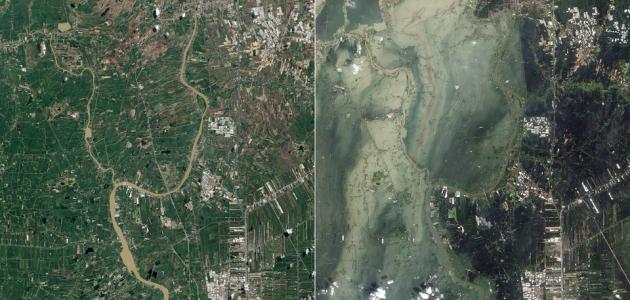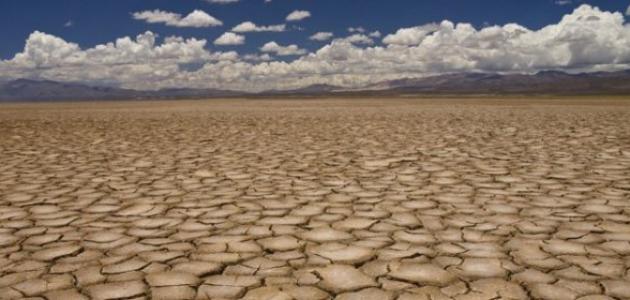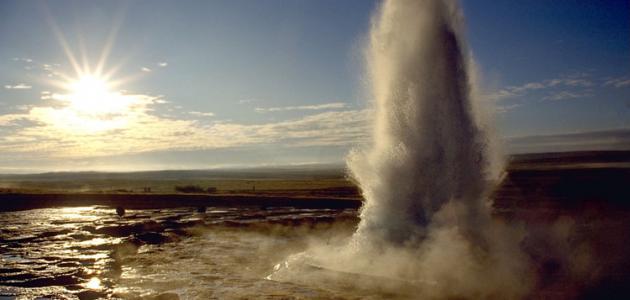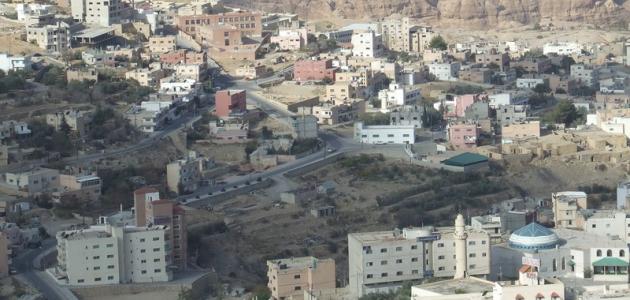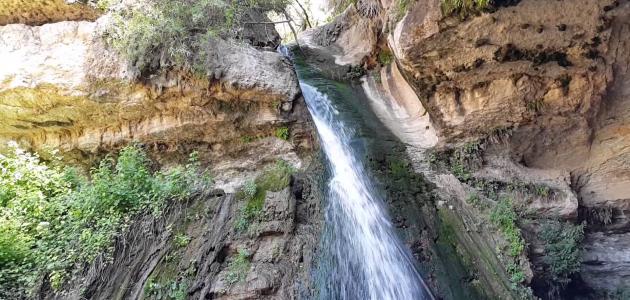Seismograph
Earthquakes are monitored and recorded using a special device called the seismograph, and it consists of a mass suspended on a fixed base, and when an earthquake occurs, this base moves with the movement of the earth, but the mass remains constant, and that movement is recorded on a specific material such as paper, or magnetic tapes , or other materials, and it is worth noting that this recording process is relative to the movement of the suspended mass relative to the Earth, and to obtain measurements related to the absolute movement of the Earth, the previous recordings are converted into mathematical calculations.
Seismograph parts
The seismograph is often used synonymously with the seismometer, but the seismometer is one of the parts of the seismograph, while the seismograph is an earthquake recording device. Seismographs are installed in the ground around the world and operate as part of an earthquake monitoring network. The seismograph consists of two main parts, namely:
- seismometer: (In English: Seismometer), it is the internal part of the seismograph, and it is a mass or pendulum (in English: Pendulum) attached to a spring.
- seismogram: (in English: Seismogram), it is a device for recording the movement of the earth, and it consists of two axes, namely: the horizontal axis for measuring time in seconds, and the vertical axis for measuring earth displacement, usually measured in millimeters.
The mechanism of action of the seismograph
Earthquakes are currently recorded electronically and the digital data is kept on a computer, but in the past they were recorded on paper, where the seismograph was installed on the surface of the earth correctly, and when any earthquake occurred, the entire seismograph would vibrate except for the mass attached to the spring that It remains almost fixed in its place due to its exposure to inertia, then the seismogram records the relative motion between the fixed mass and the rest of the parts of the device, and this recording is considered the movement of the Earth.
Read also:What are the benefits of tides for coastal residents?In the absence of any earthquake, the device does not record any reading and draws a straight line except for the presence of some small waves to indicate the presence of noise or other disturbances in the area. As for the count of the occurrence of an earthquake, the seismograph represents the data of seismic waves recorded by the seismogram in the form of a chart-like drawing. This data determines the strength of the ground, its duration, and how far it is from the monitoring device. It also determines the magnitude and magnitude of the earthquake through the amplitude of the wave that is monitored. a place far from the earthquake, i.e. on the other side of the globe; Because S-waves cannot travel through Earth's liquid core.
In the event that the distance to the epicenter from the seismograph is known, but the location of the epicenter is unknown - i.e. a country or region on the map - the location of the epicenter can be determined by following the following steps:
- Using three different seismographs from three seismic stations to determine the distance of the earthquake epicenter from a specific area, and if the difference between the arrival time of P-waves and S-waves is large, the epicenter is far from the seismograph.
- Draw a circle whose radius is equal to the known distance between the epicenter and the seismograph location, and the location of the epicenter is anywhere on the circle line.
- Use the data of two of the three seismographs to draw two circles, the radius of each of which is equal to the known distance between the epicenter and the location of the seismograph, and the location of the epicenter is anywhere on the circle line.
- Note that the two circles intersect at two different points.
- The use of the third seismograph data, as the circle resulting from it must intersect at one point with the two previous circles, and this point is called the epicenter, and this method has been used for centuries.
In order to obtain high-quality records of earthquakes, two basic conditions must be met when installing the monitoring device in a specific location, namely:
Read also:What is the mystery of the Bermuda Triangle?- Install the device in a quiet area: It is important to install the device in a place with few vibrations and far from disturbing urban activities such as: land and air transportation, construction work, etc., as this noise masks the vibrations resulting from small and distant earthquakes.
- Installing the device on the foundation rocks: When installing a seismograph in a specific area, the sensors of the device are connected directly to these rocks, where the sensors pick up the vibrations generated in the earth’s crust when an earthquake occurs, and the presence of a thin layer of soil is sufficient in order to reduce the noise transmitted through the soil, and to facilitate the process of installing and maintaining the device However, if the device is placed on a foundation as fragile as dirt, the external noise will be transmitted through the dirt along with seismic waves, which makes the process of interpreting these waves complicated.
History of the development of the seismograph
The seismograph went through many stages before it reached its current form, and here are the most important stations that had a role in the development of the device to its current form:
132 AD
The first device for measuring earthquakes was invented in 132 AD by the Chinese astronomer and mathematician Chang Heng, and he called it (English: Earthquake Weathercock). Each of them is a bronze ball, and when an earthquake occurs, one of the dragons opens its mouth through a mechanism inside the device, then throws the ball in its mouth, and it is picked up by a small anthropomorphic frog in the form of an open mouth, which causes enough disturbance to alert that an earthquake has just occurred, and it can be determined The direction of the earthquake by observing the empty mouth of the dragon.
Read also:Where is the Bermuda Triangle136 AD
The Chinese scientist Choke (in English: Choke) in 136 AD updated the device of the scientist Chang Heng, as he replaced columns of viscous liquid with balls that were present in the old device, and the height of the liquid in the columns indicates the intensity of the earthquake, and the line that connects the points resulting from the maximum movement in the direction of the earthquake.
XVIII century
Italian scientists made many attempts during the eighteenth century to record ground movements by using simple pendulums, most notably philosophy teacher Andreas Bina, who hung a pendulum on the top of a building and prepared a layer of dirt underneath it. To record the impact of the earthquake on it, and through this process the recital records the movement of earthquakes as they occur in an approximate way, as it is unable to give a real recording of the earthquake.
XNUMXth century
Due to the exposure of the city of Comrie on the Scottish border to a series of small earthquakes, an earthquake observatory was built in Britain in 1870 AD. It was called the Earthquake House. earthquake, but no earthquake was recorded by this system due to its low sensitivity to earthquakes.
John Millen (Father of Modern Seismology)
The scientist John Milne (in English: John Milne) is called (the father of modern seismology); Because of his interest in earthquakes and how to measure them, he established a seismic observatory in the Isle of Wight in the United Kingdom in 1895 AD, published periodic publications related to seismic activities, and managed a global network of seismometers. After his death, the seismic observatory established by John Millen became the same as the International Center for Earthquake Monitoring Seismological Center) and still exists until now, and in that period earthquake scales based on a simple pendulum were used; To record the relative movement of the earth, in addition to its ability to record its time history on a cylinder using paper and pen, then the recording process developed to use rays of light on photographic paper, where weak signals of large and very distant earthquakes anywhere in the world are recorded.
Wood Anderson scale and Richter scale
At the beginning of the twentieth century, American scientists used a sensitive seismometer during the study of local earthquakes in the state of California, which is a tool that includes a mass and a mirror attached to a taut, twisted wire that allows recording photographs of weak movements of local earthquakes. This tool was known as the Wood-Anderson scale (in English: Wood- Anderson), and in 1935 AD, the scientist Charles Richter used the signals resulting from the Wood Anderson scale and prepared a scale to measure the strength of an earthquake called the Richter scale.
Seismometers
Seismometers are used to measure the strength and intensity of an earthquake, and both of the previous concepts differ from the other, as the strength of the earthquake indicates the amount of energy that is emitted from the focus of the earthquake, while the intensity is concerned with observing the effects of the earthquake on buildings, people, and natural features.
Metrics of power
Earthquake strength (English: Magnitude) is a number used to distinguish the relative size of an earthquake, and it depends on measuring the maximum extent of the earthquake on the seismograph.
- The local force scale or what is known as the Richter scale.
- Surface-wave Magnitude Scale.
- Body-wave Magnitude Scale.
- The seismic moment scale.
The local dynamometer, the surface wave dynamometer, and the body wave dynamometer have limited ability to record earthquakes, as they record data on limited ranges, and are unable to measure the magnitude of major earthquakes. The sizes of seismic waves, but it is difficult to calculate compared to other types of scales, and when measuring the strength of any earthquake, all types of scales must record approximately the same value.
Earthquake intensity scale
The earthquake intensity scale (in English: Intensity) is concerned with studying the amount of damage caused by an earthquake, and the damage increases by approaching the source area of the earthquake, and decreases by moving away from it.
- European Macroseismic Scale.
- The American scale or what is known as the Modified Mercalli intensity scale.
- The Japanese scale, or what is known as the Japan Meteorological Agency Seismic Intensity Scale.
earthquakes
Earthquake is defined as a sudden shaking of the ground resulting from the passage of seismic waves through rocks, and those waves are produced due to the release of energy stored in the earth's crust, which leads to rocks suddenly pushing each other and thus sliding and collapsing, and earthquakes occur in narrow areas where rocks move relative to each other, and occur along geological faults that are usually located at the boundaries of the tectonic plates that make up the earth's crust.
Types of seismic waves
There are three main types of seismic waves:
- P-waves: They are the primary waves.
- S-waves: They are secondary waves (in English: Secondary Waves), and they are distinguished by the fact that they cannot travel through water and air, and their waves are wide compared to P-waves, so they are more destructive.
- surface waves: (in English: Surface Waves), generated when the source of an earthquake is very close to the surface of the earth, and transmitted directly below the surface, and its wave shape is similar to the water wave in terms of its nature, and despite its slow movement compared to S-waves, it is characterized by a wide amplitude of its wave, Therefore, it is one of the most destructive seismic waves, and there are two types of surface waves:
- Rayleigh waves: (in English: Rayleigh Waves), and it moves in the form of ripples similar in movement to water ripples.
- luv waves: (English: Love Waves) are slightly faster than Rayleigh waves, and cause horizontal shearing of the Earth.
Sometimes P-waves and S-waves are collectively called body waves.
Earthquakes can be monitored through the monitoring stations in the Seismographic Network, where each station in the network measures the movement of the ground in the areas where earthquakes are to be recorded, by measuring the ground shaking resulting from the stored energy that is released due to the sliding of the masses. The rocks are removed from their places, then this vibration pushes the neighboring rock masses from the ground, which causes them to vibrate, and this energy is transmitted from the epicenter (in English: the hypocenter) to the neighboring rocks in the form of waves.

